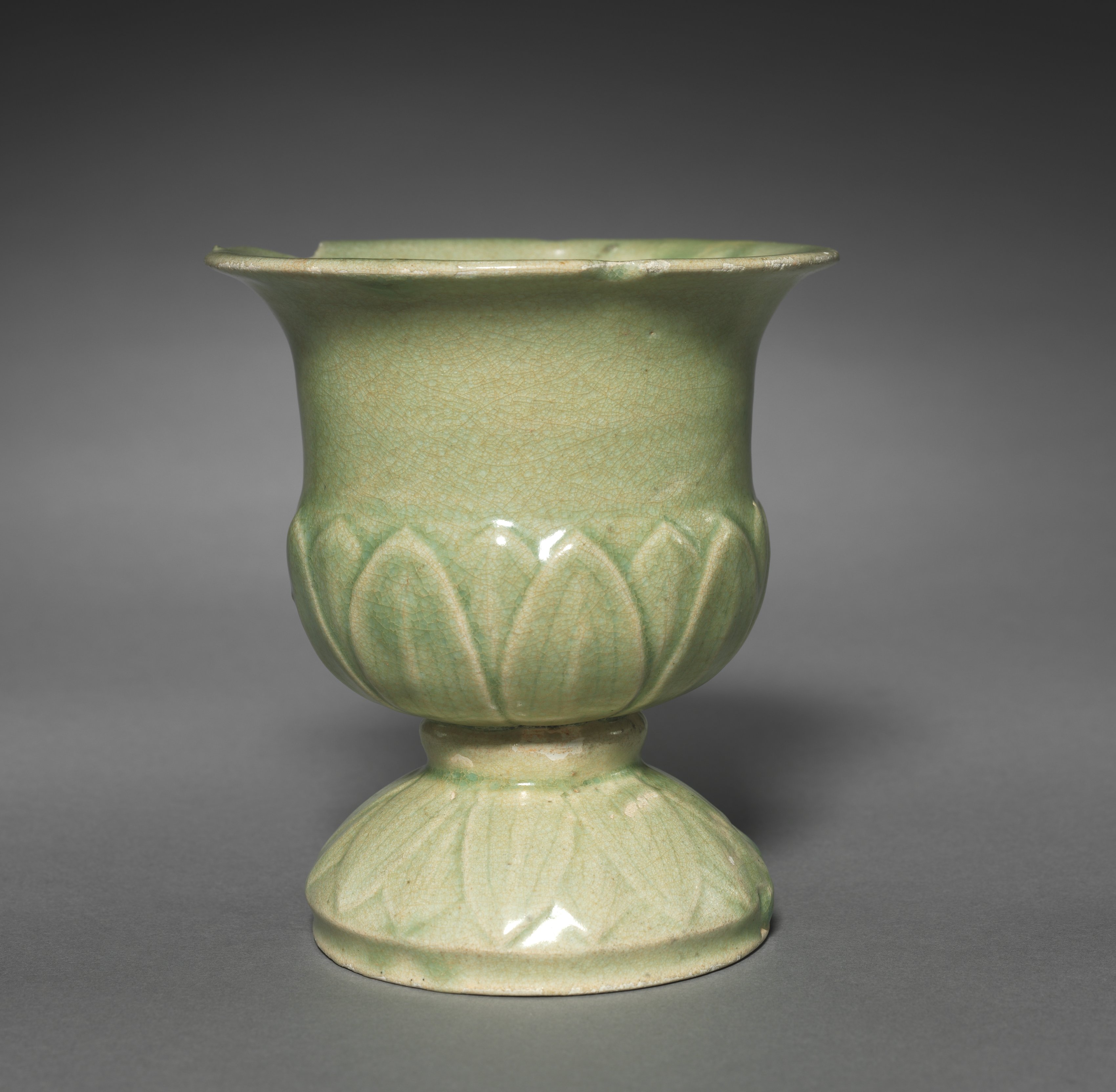The Cleveland Museum of Art
Collection Online as of April 18, 2024

Incense Burner with Lotus Petal Design in Relief
1100s
Location: not on view
Did You Know?
This incense burner may have been produced at one of the state-run kilns located in Kangjin, southern Jeolla province. The exterior decor that resembles an opening lotus flower was shaped in a carved wooden mold. Then the potter touched it up with incised details.Description
Celadons wares used for everyday such as this incense burner were among the most common burial objects in tombs during the Goryeo period (918–1392). Furnishing tombs with an elaborate assemblage of objects was believed to honor and comfort the newly dead. Generally, Goryeo tombs were left untouched until the late 19th century. During the colonial period (1910–45), however, Japanese archaeologists competitively excavated the tombs located in Kaeseong, the former capital of the Goryeo period, and these wares soon became available for Japanese and Western collectors.- acquired by Langdon Warner in Korea.
- Goryeo Dynasty: Korea's Age of Enlightenment, 918-1392. San Francisco: Asian Art Museum, 2003.Jang, Nam-won. "The Characteristics of Mid-Goryeo Celadons with Molded Design [高麗中期壓出陽刻 靑瓷의 性格]." Misulsahak yeongu (2004): 95-120. www.dbpia.co.krGoryeo: The Glory of Korea [대고려, 그 찬란한 도전]. Seoul: National Museum of Korea, 2018.Sparkles of Jade: Goryeo Celadon [高麗青磁 : ヒスイのきらめき]. Ōsaka: Ōsaka: Shiritsu Tōyō Tōji Bijutsukan, 2018.
- {{cite web|title=Incense Burner with Lotus Petal Design in Relief|url=false|author=|year=1100s|access-date=18 April 2024|publisher=Cleveland Museum of Art}}
Source URL:
https://www.clevelandart.org/art/1918.493